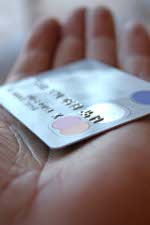Understanding Your Credit Report
 Credit reports are often used by creditors to determine how much of a risk a person would be to lend to. These reports contain information about a persons financial dealings, with some other limited personal information.
Credit reports are often used by creditors to determine how much of a risk a person would be to lend to. These reports contain information about a persons financial dealings, with some other limited personal information.
Who Can View My Credit Report?
There are a number of people who could potentially view your credit report, including the government, banks and other creditors, and insurance companies. It is also possible for employers, both present and prospective, to view your credit report. This is common in professions where they are worried about company theft or embezzlement.
In fact almost anyone can see your credit report providing that they are able to offer an actual financial reason why they should be able to see your credit report. Each person is also eligible to receive three free copies of their credit report every year, one from each of the different credit reporting agencies.
Since there are so many potentially important people who could looking at your credit report, it is important to identify any problems and try to fix them as soon as possible. This can not only make it easier to receive a loan or mortgage, but can also effect many other parts of your life.
What Type of Information is on a Credit Report?
At first glance, a credit report can seem very confusing, but all of the information in a credit report can basically be divided into four sections.
Personal Information: Credit Reports are prohibited from containing information about race, religion, or sexual orientation, but they do contain a great deal of other identifying information.
This includes the persons name, aliases, current addresses, previous addresses, Social Security Number, Date of Birth, current employer, past employer, and information about husbands or wives.
Credit Information: As the name implies, credit reports contain a great deal of information about your credit history. This includes mortgages, credit card debt, unpaid debt, debt that has been sent to a collections agency, and some utility information. Also, in the case of loans it has information such as the type of loan, length, cosigners, and a two year payment history.
While the credit information is usually very inclusive, it can not include bankruptcies that are more than 10 years old or other debt that is older than 7 years.
Information from Public Records: This includes any state or country government records, including information on bankruptcies, tax liens, or other civil judgments. It can also include child support.
Recent Credit Report Requests:: This section lists the people who have requested your credit report over the last year, although it goes back 2 years for employers. Sometimes, too much activity can raise a red flag to lenders and may also be an indication of identity theft.
